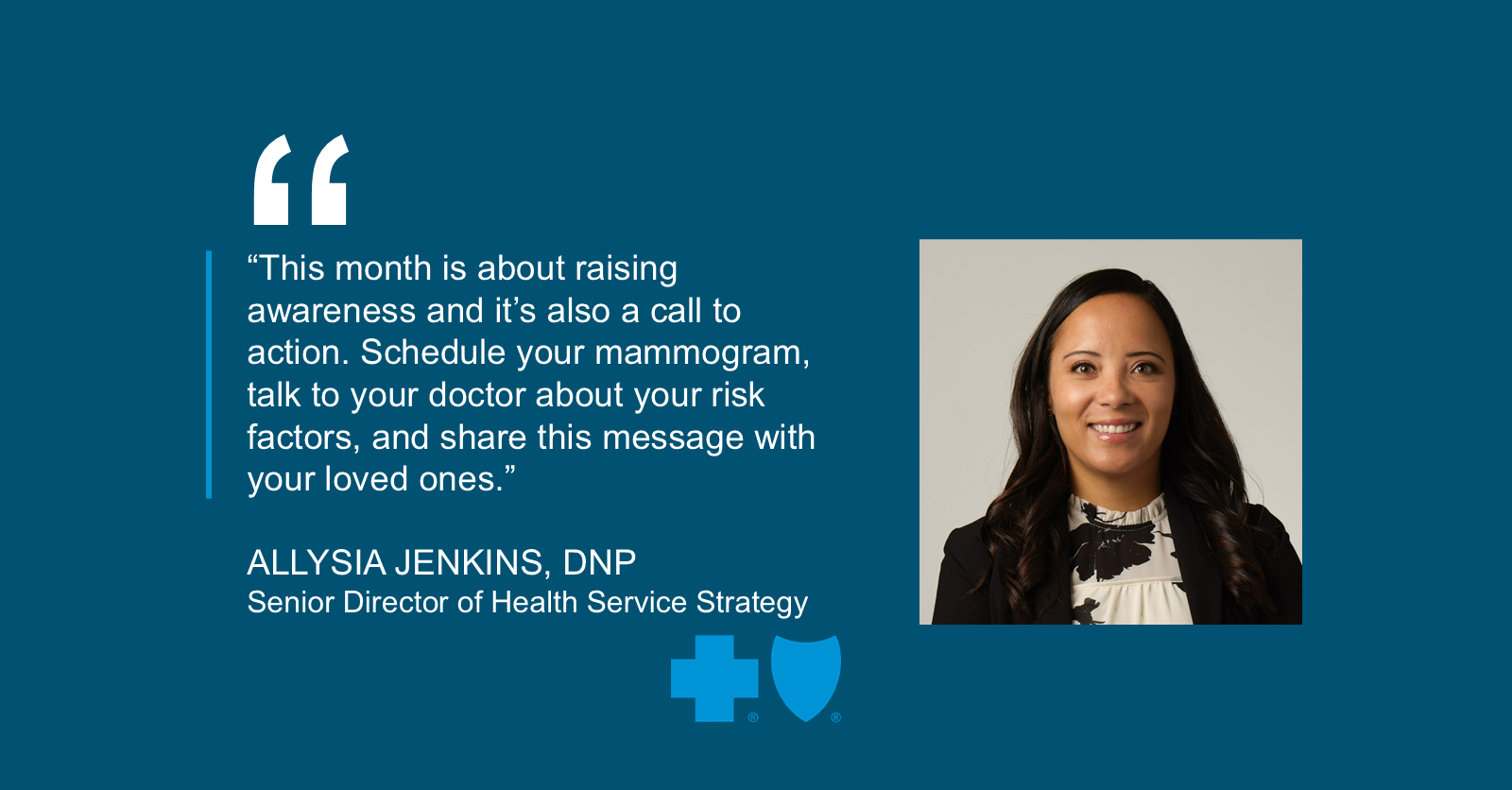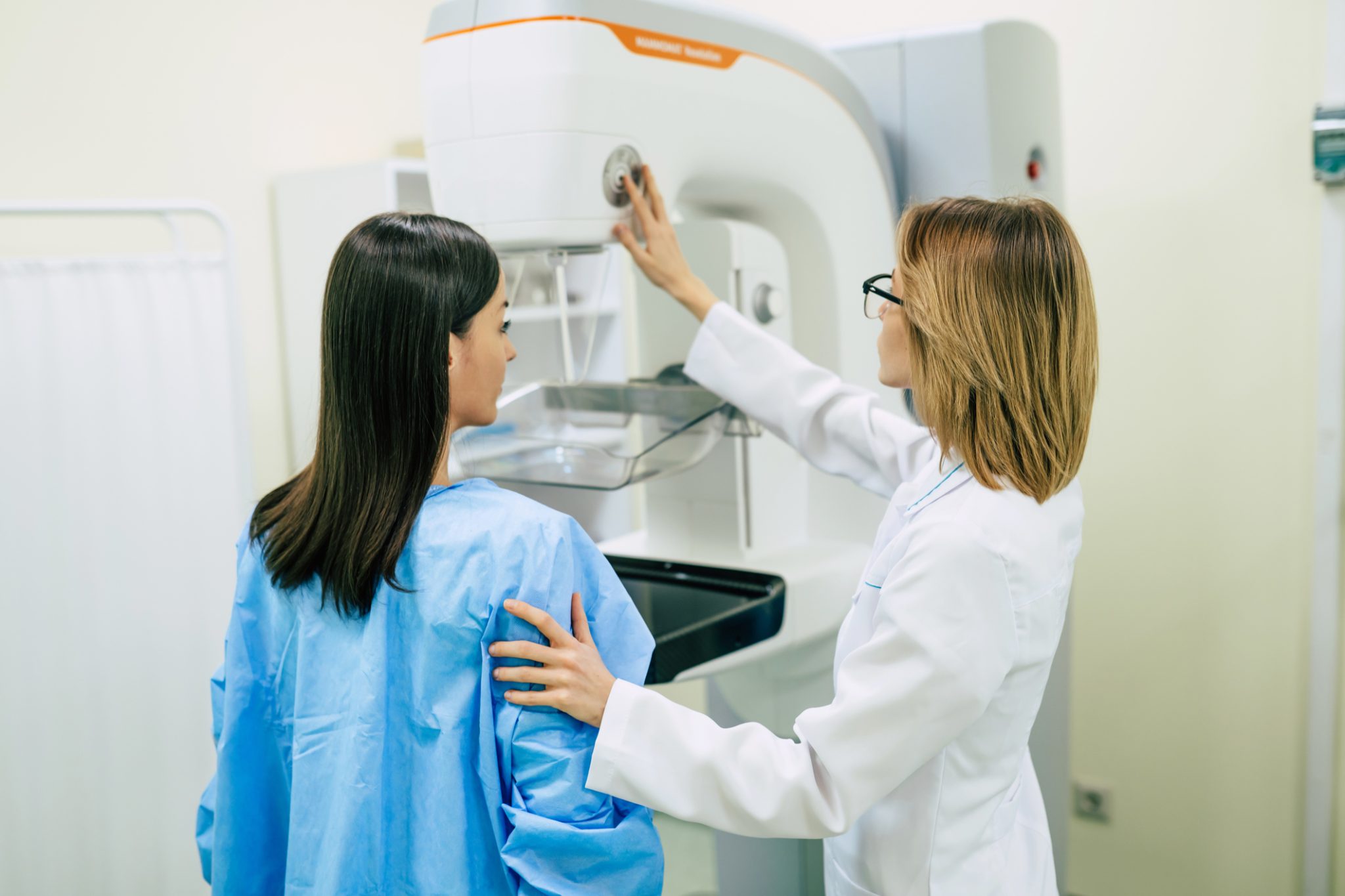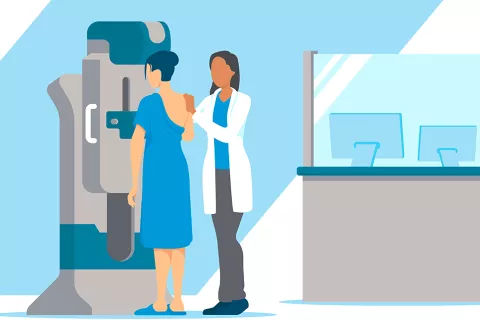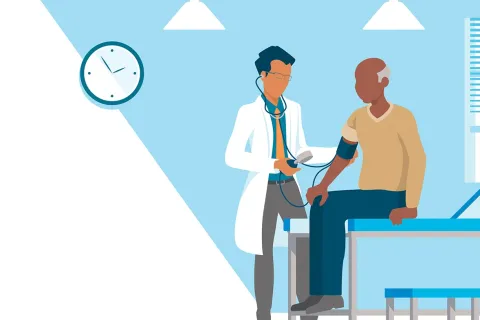Breast cancer awareness: Understanding early detection
Breast cancer is one of the most common cancers among women. However, when caught early, it's also one of the most treatable. As Breast Cancer Awareness Month comes to an end, we checked in with Allysia Jenkins, a doctorally prepared nurse (DNP) and Senior Director of Health Service Strategy at Blue Cross and Blue Shield of Minnesota on the best ways to prioritize your health and take proactive steps toward early detection year-round.
Why early detection matters
The most important takeaway Jenkins wants members to know about breast cancer is the importance of early detection. That's because she has witnessed the impact it can have within her own family.
"My mom had early onset breast cancer," Jenkins said. "She was diagnosed at her very first mammogram at 40. Because of that early detection, she had more options for treatment and she's doing really well."
Breast cancer doesn’t always present obvious symptoms in its early stages. That’s why routine screenings are so critical. Mammograms can detect tumors before they’re felt, often years before symptoms appear. Early-stage breast cancer has a significantly higher survival rate, and treatment options are typically less invasive and more effective.
According to the CDC, most breast cancers occur in older women, but rates have been increasing slowly among women younger than 45 years in all racial and ethnic groups. At the same time, breast cancer deaths have gone down due to advancements in early detection and treatment.
Jenkins has been getting annual mammograms since she was 26 because of her family history.
"This was part of the discussion I had with my primary care provider," Jenkins said. "They can't guarantee I won't get breast cancer, but at least with annual screenings, we know we can catch it early if it develops."
Understanding screening guidelines
The US Preventive Services Task Force recommends women age 40 to 74 with average risk get a mammogram every two years. Starting screenings for breast cancer at age 40 can catch some women off guard.
"Compared to other recommended cancer screenings, breast cancer screenings do start on the earlier side," Jenkins said. "Some women may not be aware, and others may think they don't need to be screened at that age, especially if they are otherwise healthy and aren't experiencing any symptoms."
Jenkins recommends discussing your risk with your provider. If you have a family history of breast cancer, carry certain genetic mutations (like BRCA1 or BRCA2) or other risk factors, your provider may recommend starting earlier, getting screened more frequently or using additional screening methods such as MRI.
In addition to your annual screening, Jenkins said it’s important to know your own body. The National Breast Cancer Foundation recommends completing a self-breast exam at least once a month.
Breast cancer screening coverage
In 2024, Blue Cross and Blue Shield of Minnesota covered more than 450,000 mammograms. In general, one breast cancer screening per year is covered for Blue Cross members. Many plans include coverage for 3D mammograms as a preventive benefit, with no cost sharing. For more information about your benefits, call the number on the back of your member ID card.
This October, Jenkins encourages members to use their preventive health benefits to get their breast cancer screening scheduled and put their health first.
"This month is about raising awareness and it's also a call to action," Jenkins said. "Schedule your mammogram, talk to your doctor about your risk factors, and share this message with your loved ones."
Learn more
To learn more about preventive health benefits for women, click here.





